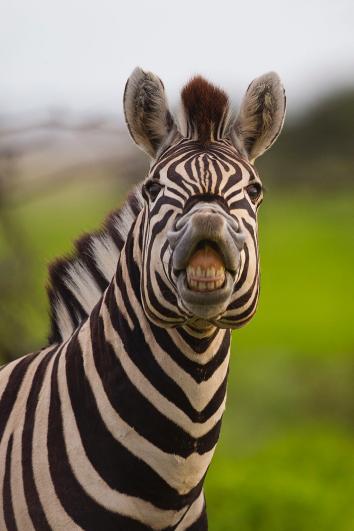 Floating, or filing down sharp edges (hooks), is a regular part of standard domesticated horse care and dental checks should be done at least once a year. Good dental health helps to prevent many problems for the horse, including weight loss, abscesses, and other health issues. Why is this, though? What did horses do before humans domesticated them? What about wild horses? Zebras?! Most of the answers lie right on the ground.
Floating, or filing down sharp edges (hooks), is a regular part of standard domesticated horse care and dental checks should be done at least once a year. Good dental health helps to prevent many problems for the horse, including weight loss, abscesses, and other health issues. Why is this, though? What did horses do before humans domesticated them? What about wild horses? Zebras?! Most of the answers lie right on the ground.
Wild horses and other equids eat a 100% forage-based diet with a variety of textures and abrasiveness. They graze almost exclusively head-down (the way they are physically built to do). The same is not true for domesticated or captive horses. Stabled horses, horses fed from hanging feed bags, and horses fed primarily commercial feed do not have that same access. To a lesser degree, even some pastured horses lack the variety of textures and abrasives common for their wild cousins. These differences play a large part in tooth wear. Stable-kept horses have a much higher incidence of abnormal dental wear than horses on pasture and most domesticated horses eat lower abrasion diets.
While more study is needed on the differences between wild and domesticated dental differences, we do know this much: good quality forage, ground-level feeding, and good preventative care and treatment is crucial to helping your horses’ pearly whites in good condition which in turn helps to keep them healthy!
Posted: May 18, 2021 by Connie Morris
𝑺𝒕𝒓𝒂𝒊𝒈𝒉𝒕 𝒇𝒓𝒐𝒎 𝒕𝒉𝒆 𝑯𝒐𝒓𝒔𝒆’𝒔 𝑴𝒐𝒖𝒕𝒉
Wild horses and other equids eat a 100% forage-based diet with a variety of textures and abrasiveness. They graze almost exclusively head-down (the way they are physically built to do). The same is not true for domesticated or captive horses. Stabled horses, horses fed from hanging feed bags, and horses fed primarily commercial feed do not have that same access. To a lesser degree, even some pastured horses lack the variety of textures and abrasives common for their wild cousins. These differences play a large part in tooth wear. Stable-kept horses have a much higher incidence of abnormal dental wear than horses on pasture and most domesticated horses eat lower abrasion diets.
While more study is needed on the differences between wild and domesticated dental differences, we do know this much: good quality forage, ground-level feeding, and good preventative care and treatment is crucial to helping your horses’ pearly whites in good condition which in turn helps to keep them healthy!
Category: Misc
PayPal Giving Fund
Network For Good
Silent Donor
Support Us Anonymously! Silent Donor is the largest anonymous donation platform in the world, allowing all donors to send fully anonymous, tax-deductible donations to the causes they want to support. Click the link below to access their private platform – simply write in Faith N Friends as the organization to receive your anonymous donation on their form. Choose to donate via card, bank transfer, stock, or cryptocurrency. Keep the impact of your gift, and also keep your privacy. Send your anonymous donation to support our mission today! Donate Now – Silent Donor
Doris Day Animal Foundation
Follow Us on Social Media